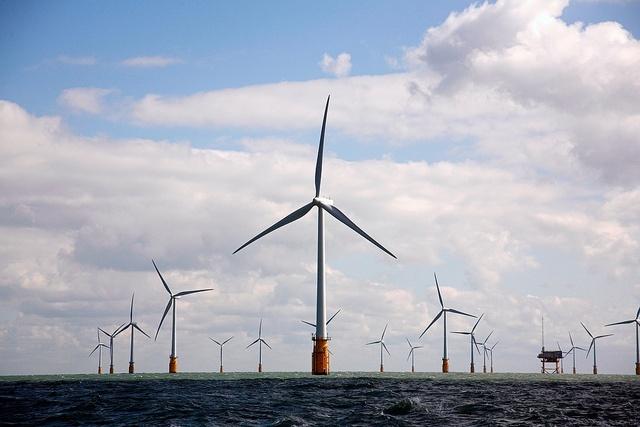
By Sam Poli
In the last decade, the federal government and its agencies have followed a hands-on approach to bring renewable energy to the forefront of American industry. Recently, a publication by the Mid-Atlantic Regional Planning Body (MidA RPB), in accordance with President Barack Obama’s national ocean policy, defined a clear future for offshore wind development on the Atlantic coast.
MidA RPB, in collaboration with a number of government agencies, states and stakeholders, published a draft version of the Mid-Atlantic Regional Ocean Action Plan to create a baseline regional ocean-management system. To the surprise of some, the proposed plan heavily focuses on harnessing offshore wind power to meet some of the most aggressive clean-energy goals established in the Americas.
Addressing investor concerns
In its most basic framework, the action plan acts to make offshore wind expansion more attractive to energy developers. Past failures in offshore wind, especially the perpetually stalled Cape Wind offshore energy facility in Nantucket Sound, scared investors and developers away from entering the offshore wind industry wholeheartedly. Even the relatively successful Block Island Wind Farm only saw progress amidst controversy.
To address investor concerns, the draft action plan emphasizes that future offshore energy proposals in the Mid-Atlantic region will receive increased technical assistance to accelerate the environmental assessment processes that routinely slowed projects in the past. Ocean spaces are hotbeds of overlapping boundaries and jurisdictions, and failures in agency cooperation for ocean projects often increase time, costs and overall investment risk. Adding to the problem is the National Environmental Policy Act (NEPA), a piece of legislation that requires a collaboration of federal agencies to assess environmental impacts to all lands that are leased by the federal government.
This environmental assessment process often struggles to move forward at a reasonable pace: A 2014 report produced by the U.S Government Accountability Office found that the average environmental assessment processes usually takes around 4.6 years to complete.
Fixing inefficiency and reducing risk
By addressing these inefficiencies,MidA RPB has produced an ambitious action plan that works with existing legislation to remove the factors that discourage offshore wind development. What does this entail? Essentially, all of the council’s proposed actions increase efficiency in environmental assessment by encouraging successful collaboration between government, stakeholders and developers.
To increase private investment in offshore wind, the regional planning body embarked on an ambitious plan to collect and distribute all of the information developers need to get their projects approved by the government. The report presents theses proposed actions as a two-part system:
- Let developers know what data, agencies and documents they will work with at each separate step of the process.
- Maintain a pool of scientific data in a Mid-Atlantic Ocean Data Portal that will massively accelerate the environmental assessment process.
So, what does this mean for energy developers? For one, developers will avoid spending a half-decade trying to collect data for environmental assessments. Additionally, the federal government (through grants to various academies, universities and organizations) will provide a great starting point to inform renewable energy development. However, there will still be more work for developers to do, as Communications Manager Arlo Hemphill for the
Mid-Atlantic Regional Council on the Ocean (MARCO) emailed us to emphasize:
[The Portal] does not have the resolution to completely replace due diligence and on-the-water assessments that wind companies will need to perform in order to site their projects. The Portal provides a starting point by showing where other ocean uses are occurring and giving some sense of the bottom habitat and species distributions in the area. However, offshore wind development requires a much finer resolution of bathymetry, bottom habitat, presence of protected species, cultural considerations and coordination with other ocean sectors. No regional database, the Portal or otherwise, will ever be able to fully replace actual in situ site assessments - they just provide a launching point.
Future considerations
In spite of MidA RPB's plan, there are concerns that this support will raise questions about the hands-on role of government in the energy industry.
Overall, it appears that the regional council has struck an excellent balance between supporting energy developers and preserving the public trust. Countless university students, organizations and threatened species will also benefit from the plan’s collective pursuit of knowledge, and the overall benefits of sustainable energy are fairly undisputed. The only concerns that remain are the unknown challenges that face offshore wind moving forward.
The Mid-Atlantic Regional Ocean Action Plan will be up for public comment until Sept. 6.
Ed. Note: this article has been edited since it was first published
Image credit: Flickr/Nuon
Sam Poli is an independent contributor that finds pleasure in reading boring government reports about the environment. He is a recent graduate from the University of Rhode Island, earning degrees in Marine Affairs and History
TriplePundit has published articles from over 1000 contributors. If you'd like to be a guest author, please get in touch!














